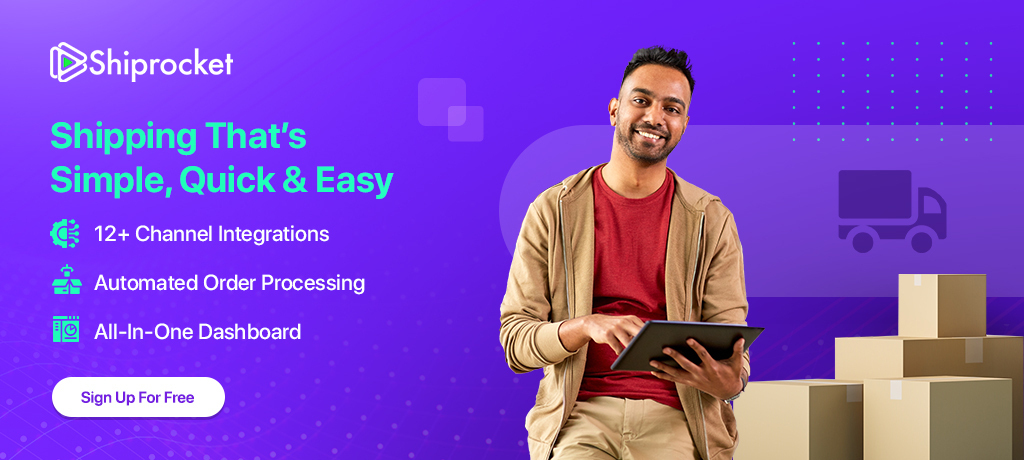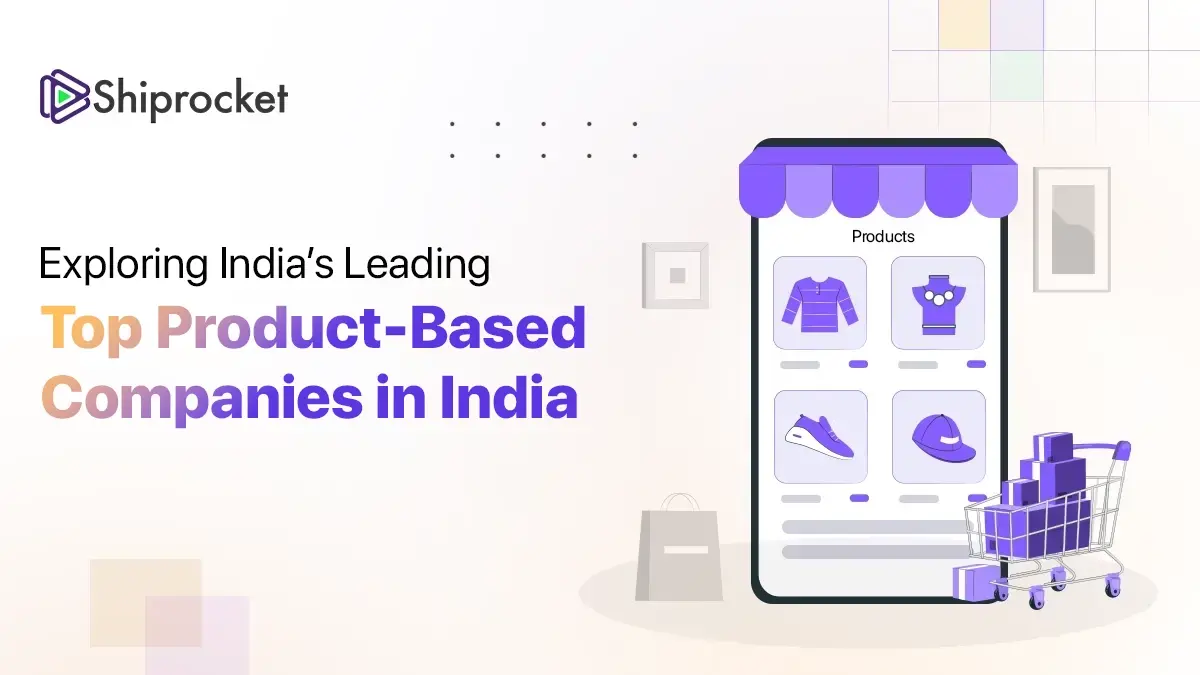Backorders: Causes, Solutions & Customer Retention Tips
- What is Backorder?
- Difference between Backorder And Out-Of-Stock
- Causes of Backorders and How to Deal with them
- How to Retain Customers When You Have Backorders
- Create an Email List: Building A Valuable Opportunity
- Proactive Communication: Setting Clear Expectations from the Start
- Transparency: Building Trust Through Honest Communication
- Offer Alternatives: Providing Customers with Options and Flexibility
- Incentives and Compensation: Turning Frustration into Positive Experiences
- Customer Service Support: Making Your Team Your Best Asset
- High-Value Customers: Enhancing Customer Loyalty Through Exclusive Access
- Leverage Technology: Using Digital Tools to Keep Customers in the Loop
- Improve Your Backorder Handling with Shiprocket
- Conclusion:
Back orders can be a major problem for online sellers, especially during peak selling seasons like new year. If a customer is interested in buying a particular product, but it is not available, they will leave without making a purchase. Backorders can have an adverse effect on the brand’s reputation and thereby reduce sales. It is critical to avoid falling prey to inventory problems and guarantee your buyers never leave empty-handed.
This is what we call a Backorder. As an end-customer, do you still wait for the product to be restocked, or do you visit another eCommerce store to buy it?
If not controlled well, back orders will result in unsatisfied customers, missed profits and long-term company damage. But if managed properly, they provide great opportunities to increase sales. This article will look into the major causes of back orders and how to manage them. Learn how to promote efficiency and enhance your business in peak selling periods.
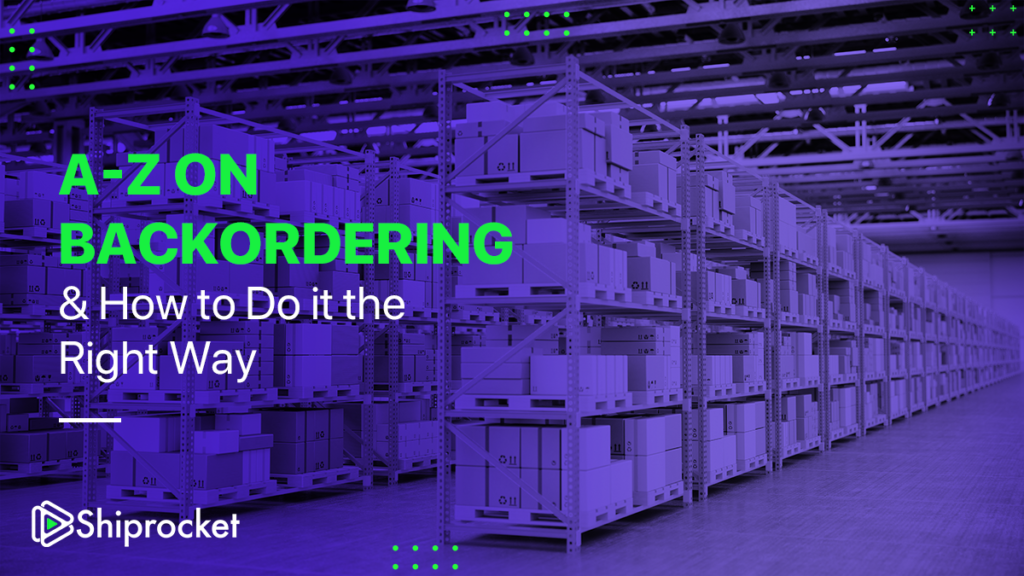
What is Backorder?
A backorder can be defined as an order that appears out of stock when a customer visits an online store’s product page but is promised to ship once the item is available with the retailer. It is a process to allow your customer to shop for products even when you have limited stock available.
Allowing a backorder item means the buyer can order the thing now and receive it later when the product is available with the company. When an order contains multiple items, and any object is a back ordered item, the latter can’t be packed and shipped given the lack of inventory currently. However, the other items in the order can be split and sent to the end customer.
Difference between Backorder And Out-Of-Stock
Most people often tend to confuse between the two terms – backorder and out-of-stock. Out of stock means that a product is not available with the retailer as of now, and the retailer cannot provide a date of resupply of that product. On the other hand, a backorder item promises a date of resupply to customers. A user can order a product that is available for backorder but cannot place an order if It has run “out of stock”.
To make it easier it’s the difference between ‘This item is currently unavailable’ and ‘This item will be shipped in the next ten days.’ There is hope in a backorder item, whereas this is not the case without stock products.
Causes of Backorders and How to Deal with them
Logistics is a key component in the growth of eCommerce business. Let us look at the most common causes of backorders. We will also go through some simple yet effective ways to tackle these issues simultaneously.
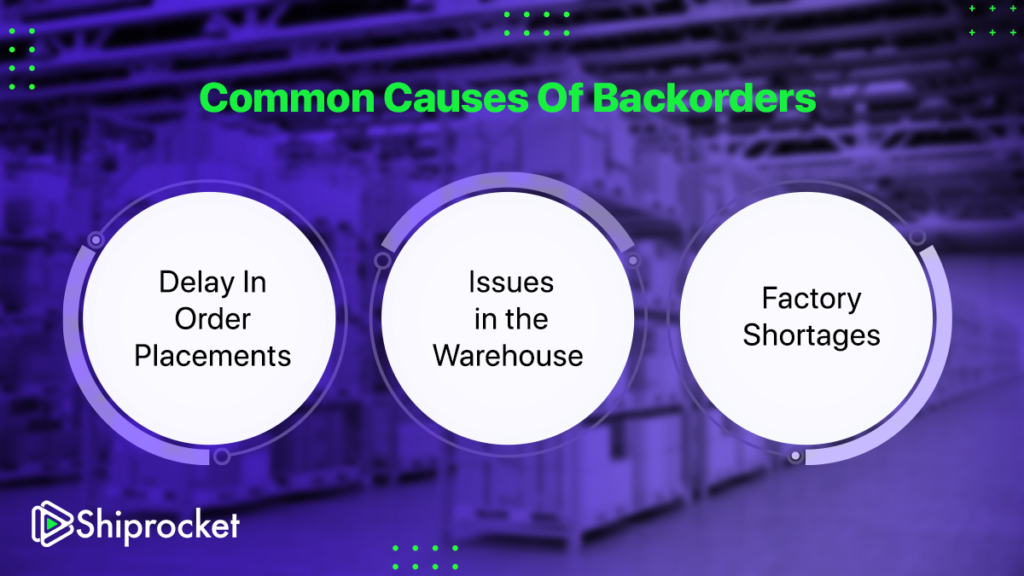
1. High Demand or Popularity Surge
Cause: Seasonal sales, promotions, or any other change in consumer trends may lead to a higher stockout rate than planned. This is especially the case when a product becomes popular overnight on social media platforms or due to influences’ recommendations.
How To Deal with this Issue: Past customer records should be employed in estimating demand flow. A good forecast will assist in adequate stocking of products, and therefore, minimise situations whereby the business exhausts its stocks in certain periods.
2. Shipping and Logistics Issues
Cause: Transportation problems, customs holds or other supply chain irregularities such as strikes, earthquakes, floods, etc. can highly influence a company’s operations. This can occur randomly and businesses must know how to deal with such sudden occurrences.
How To Deal with this Issue: Companies must have tracking services and send timely notifications. You can use several shipping partners to obtain backup in case a certain shipping company delays the delivery. Try to ensure that you have balanced schedules for shipping and receiving goods. Planning in advance is ideal in such cases.
3. Delay in Placing an Order
Cause: Most businesses take a data-driven approach when ordering inventory from the supplier or manufacturer. However, there are many where the reordering process happens manually. A dedicated person or team manually reviews the order before a purchase order is sent and makes the final call about whether the company needs to replenish its stock.
Sometimes, they decide no replenishment is necessary, only to experience an influx in orders. Since they haven’t put in an order, their upstream supply chain partner may not have replenished either. As a result, the company must put these customer orders on backorder.
How To Deal with this Issue: Use a data-driven approach to safety stock and re-ordering inventory rather than following a manual or an intuitive inventory management strategy.
4. Lead Time Miscalculations
Cause: Some items are likely to be out of stock when required if restocking lead time estimates are inaccurate. Typically, lead times vary due to production, shipping, or order processing time.
How To Deal with this Cause: There will always be a fluctuation in lead time and thus some stock should be covered by a safety stock for any item with high demand. Include time for checking customs, quality assurance, and other possible hold-ups.
Try to involve flexibility regarding ordering processes to react to fluctuating lead times. Collect feedback and review previous order cycles to improve your current lead time calculations.
5. Discrepancies in the Warehouse Management System
Cause: Insufficient data leads to bad decision-making. Inaccurate inventory data is a massive issue for many businesses. Their WMS or inventory management system tells them they have enough stock in their system to last through another reorder cycle.
Things are fine until they check their physical inventory and see that their system’s numbers are way off. This often happens because the WMS doesn’t correctly sync its inventory with other data sources, including point-of-sale systems (e.g., in-store, online, mobile app).
How To Deal with this Issue: Conduct physical inventory counts and compare them against your inventory system data. You should keep doing this until you’ve identified the sources of error. The goal is to get an inventory accuracy rate between 95% and 100%.
The exact inventory accuracy number you’re aiming for depends on which type of business you’re in. Some companies can afford stock-outs, while others (like the food and beverage industry) have little room to afford backorder costs.
6. Production Delays
Cause: This occurs when you depend on a supplier for your line of products. Quality control problems like new product defects in the production line, machinery failures, not being able to procure raw materials etc., are other barriers that can hinder product release rates. These disruptions can have a domino effect on the suppliers, taking longer to satisfy backorders.
How To Deal with this Issue: Maintain prompt communication to get notification of delays early enough to make necessary adjustments. This should be accompanied by communication with the customers in case of any production hitches and an estimation of when the inventory will be restocked. Customers appreciate straightforward communication; keep them informed about the situation to assure them deliveries.
How to Retain Customers When You Have Backorders
Customers can leave your online store and navigate to a competitor’s website faster than if they were window shopping at brick-and-mortar shops. When they come across something they don’t like, they will abandon their cart within seconds. You don’t want that to happen, right? So, here are a few steps you must follow to retain customers even when you have backorder items –
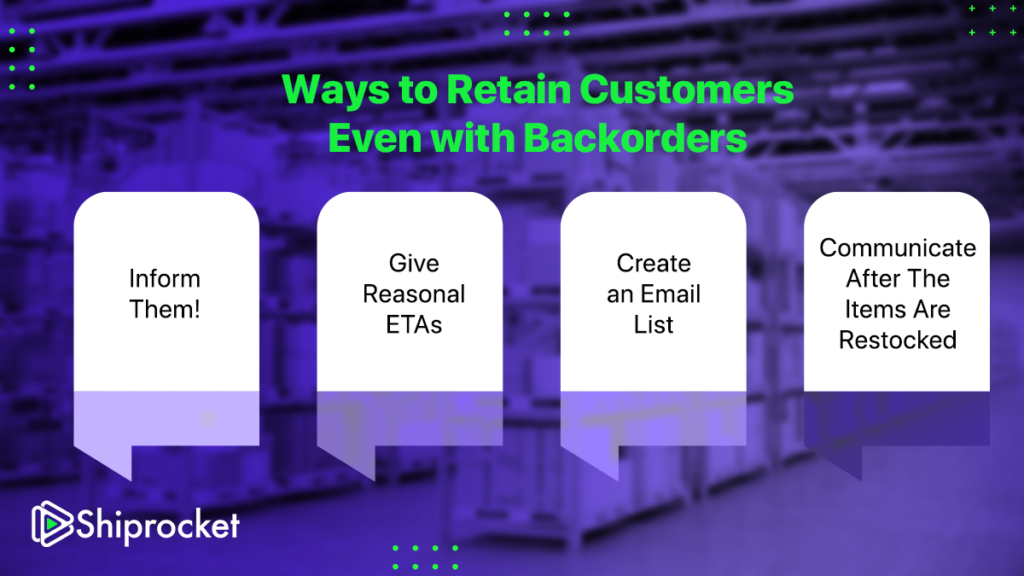
Create an Email List: Building A Valuable Opportunity
Collect email addresses on the product page for those who want to be notified once the product is back in stock. This is a tremendous opportunity to build excitement and create a sense of urgency once the product is available again.
Proactive Communication: Setting Clear Expectations from the Start
Notify the clients in advance if there are any delays or backorders. This helps set a baseline and reduce potential irritation. Send them a notification of when to expect the product or give them a suggestion of the time they can try again. In case of any change of date, send this information to the customer immediately.
Transparency: Building Trust Through Honest Communication
Explain the cause for backorder such as supply chain constraints, excessive orders or incidences of production hold up. When customers sense you are being truthful, then they shall put trust in your brand. Provide a tool that lets the customer see whether their order is currently in backorder, for example, create a backorder status panel on your website. It also makes customers feel like they have control over what is happening.
Offer Alternatives: Providing Customers with Options and Flexibility
You can recommend other products with similar models or styles, which are available in stock. This can help the customers feel like have other options. By so doing, you save the customer from waiting and indeed change a backorder into a sale. Provide flexible options and allow customers to decide if they want to wait for the delivery of the item they originally ordered or pick a refund and order another item.
Incentives and Compensation: Turning Frustration into Positive Experiences
You can offer a small discount or free shipping on their next order. Providing incentives shows that your business cares for its clients and is ready to work extra hard to keep them happy. Reward backorder buyers’ first dibs on new products or special offers as a token of appreciation. This enhances brand loyalty.
Customer Service Support: Making Your Team Your Best Asset
Make your customer service teams accessible to clients at all times. They should always be ready and well-equipped to handle such questions politely and sympathetically. The support personnel must be perfectly capable of transforming a client’s negative experience into a positive one by being receptive and helpful to the situation. Appreciate customers who are kind and patient during challenging situations, making them stick with the business in the long run.
High-Value Customers: Enhancing Customer Loyalty Through Exclusive Access
You can give high-value customers or customers who spend a lot of time on your website or shopping app access to the next version of the product or the next set of products to be released. They also simply re-affiliate the commitment to your store or service when you give them special privileges or pass a particular wait time. Communicating the status of that back-ordered item helps decrease customers’ stress and maintain their interest in your business.
Leverage Technology: Using Digital Tools to Keep Customers in the Loop
Ensure customers get updates on the stock status through operational real-time inventory management systems. The less ambiguous the data offered; the less annoying backorders will be. Some tools provide information in real-time and eliminate future backorders. Add a “notify me when back in stock” option on your website. Customers will always be informed when the product is in stock again, this can help boost demand.
If you promise them you’ll start shipping on an X date, every customer with their products on backorder will be expecting to receive shipping notifications on that date. So a good rule of thumb is to keep your customers in the loop. If there’s a delay, tell your customers before complaints start pouring in.
With a reliable inventory tracking system, you can easily manage backorders to ensure your customers aren’t left waiting long.
Improve Your Backorder Handling with Shiprocket
Shiprocket provides an intuitive platform that manages inventory effortlessly and streamlines order processing and shipping. Get help to manage backorders without any hassle and improve customer satisfaction levels. You can get access to several tools and resources such as real-time inventory integration, order breaking, and efficient handling of backorders. Shiprocket ensures that your customers are kept informed and their orders are shipped without fail.
Are you ready to manage your eCommerce logistics effortlessly? Do you want to maintain your customer base even in case of backorders? Register with Shiprocket today to benefit from their clean order processing system that ensures your business continues to operate optimally even if the stock is scarce. Hurry Up!!
Conclusion:
Backorder situations are widespread in eCommerce companies; however, they are not necessarily a sign of poor performance. Instead, they can be the distinct factor of a good company if you are adequately geared to increase customer satisfaction.


